Filter by

Breast Cancer Stem Cells & Therapy Resistance
This volume thoroughly examines breast cancer stem cells (BCSCs), from basic definitions to techniques for identifying, isolating, culturing, and targeting BCSCs for therapy; there is additional focus on pre-clinical and clinical results. The text begins with a discussion of breast cancer, focusing especially on the limitations of current therapies in its treatment. The subsequent chapters intr…
- Edition
- -
- ISBN/ISSN
- 978-3-319-22020-8
- Collation
- -
- Series Title
- -
- Call Number
- 616.99
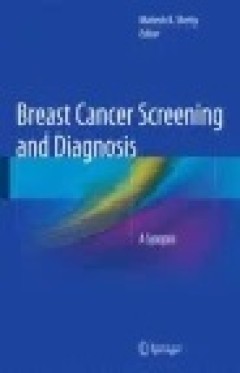
Breast Cancer Screening and Diagnosis
This book presents the current trends and practices in breast imaging. Topics include mammographic interpretation; breast ultrasound; breast MRI; management of the symptomatic breast in young, pregnant and lactating women; breast intervention with imaging pathological correlation; the postoperative breast and current and emerging technologies in breast imaging. It emphasizes the importance of f…
- Edition
- -
- ISBN/ISSN
- -
- Collation
- -
- Series Title
- -
- Call Number
- 616.99

Diagnosis and Fault-Tolerant Control
This volume provides a practical yet comprehensive guide to manage the shift in the diagnosis of lung cancer from large resections to small samples, including cytology specimens and core biopsies. Specifically, it outlines various available minimally-invasive modalities and presents algorithms to optimize and maximize sample collection and processing beginning at the time of tissue acquisition …
- Edition
- -
- ISBN/ISSN
- 9781493916078
- Collation
- -
- Series Title
- -
- Call Number
- 571.978

What Every Woman Should Know about Cervical Cancer Revised and Updated
This book (an updated and extended edition) is about mobilizing women and health care policy makers and providers to unite their efforts in a single strategy for fighting cervical cancer worldwide. The objective of this strategy would be to reverse cervical cancer prevalence and mortality rates among all 2.4 billion women at risk and to achieve this goal within 10-15 years of implementation. Ce…
- Edition
- -
- ISBN/ISSN
- 978-94-017-7560-1
- Collation
- XLI, 527
- Series Title
- -
- Call Number
- -

Redox-Active Therapeutics
This essential volume comprehensively discusses redox-active therapeutics, focusing particularly on their molecular design, mechanistic, pharmacological and medicinal aspects. The first section of the book describes the basic aspects of the chemistry and biology of redox-active drugs and includes a brief overview of the redox-based pathways involved in cancer and the medical aspects of redox-a…
- Edition
- -
- ISBN/ISSN
- 978-3-319-30705-3
- Collation
- -
- Series Title
- -
- Call Number
- 616.994
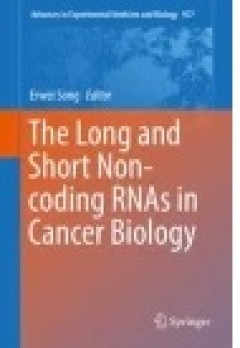
The Long and Short Non-coding RNAs in Cancer Biology
The book conveys a comprehensive knowledge of long and short ncRNAs in cancer regulation and their potentials as diagnostic biomarkers and therapeutic targets. Topics covered include the molecular mechanisms of various classes of ncRNAs (with emphasis on long non-coding RNAs and microRNAs) in cancer, the functional roles of ncRNAs in regulating different cancer hallmarks (including proliferatio…
- Edition
- -
- ISBN/ISSN
- 978-981-10-1498-7
- Collation
- VIII, 458
- Series Title
- Advances in Experimental Medicine and Biology
- Call Number
- -

New Approaches to Natural Anticancer Drugs
This book provides an up-to-date review of recently identified natural anti-tumor compounds from various natural origins including plants, fungi, endophytic fungi and marine organisms. It also includes discussion of new areas such as biotechnology and nanoparticles. Chapters explain the challenges and developments in anti-cancer drug discovery approaches, traditional remedies for prevention an…
- Edition
- 1
- ISBN/ISSN
- 978-3-319-14026-1
- Collation
- XI, 106
- Series Title
- SpringerBriefs in Pharmaceutical Science & Drug Development
- Call Number
- -
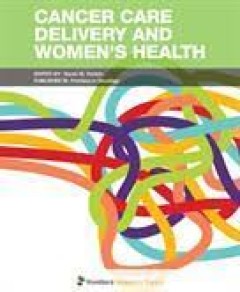
Cancer Care Delivery and Women's Health
Cancer care delivery refers to the multiple layers of the health care system that interact to affect outcomes for patients with cancer and the quality of that care. The factors included in the care delivery system that potentially alter outcomes include social dynamics, financing systems, organizational structures and processes, health technologies, provider and individual behaviors. Because wo…
- Edition
- -
- ISBN/ISSN
- -
- Collation
- -
- Series Title
- -
- Call Number
- 610 CAN
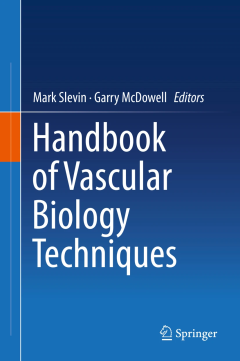
Handbook of Vascular Biology Techniques
A wide range of research methods for the study of vascular development, from basic laboratory protocols to advanced technologies used in clinical practice, are covered in this work. A range of methodologies such as molecular imaging platforms and signalling analysis, along with tumour models are collated here. Four sections explore in vitro techniques, in vivo and ex vivo manipulations, imag…
- Edition
- -
- ISBN/ISSN
- 978-3-319-14345-3
- Collation
- XII, 477
- Series Title
- -
- Call Number
- 611.1 Han
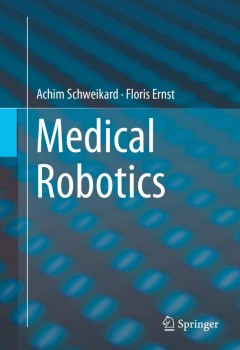
Medical Robotics
This book provides a thorough background to the emerging field of medical robotics. It covers the mathematics needed to understand the use of robotic devices in medicine, including but not limited to robot kinematics, hand-eye and robot-world calibration, reconstruction, registration, motion planning, motion prediction, motion correlation, motion replication and motion learning. Additionally, b…
- Edition
- 1
- ISBN/ISSN
- 978-3-319-22890-7
- Collation
- XIII, 424
- Series Title
- -
- Call Number
- -
 Computer Science, Information & General Works
Computer Science, Information & General Works  Philosophy & Psychology
Philosophy & Psychology  Religion
Religion  Social Sciences
Social Sciences  Language
Language  Pure Science
Pure Science  Applied Sciences
Applied Sciences  Art & Recreation
Art & Recreation  Literature
Literature  History & Geography
History & Geography